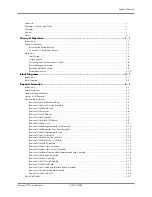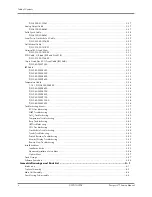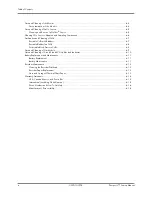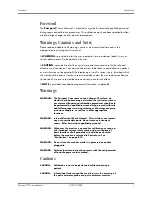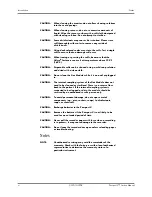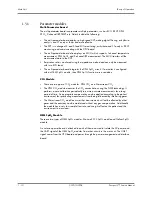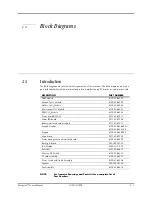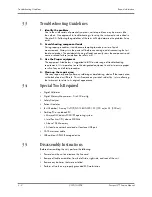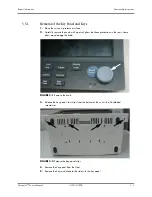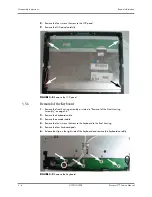
1 - 7
Theory of Operation
Main Unit
Power board (AC/DC)
The power board (AC/DC) converts the input AC power to DC power (16.8V DC), which
then serves as the input of the power management and interface board.
Power management and interface board
This board is responsible for power management and interfaces. Power management can
perform the functions below:
1.
Auto-select the DC source between the power board and the two batteries.
2.
Convert the DC source into 12V, 5V, and 3.3V DC and then output them to other boards
and modules.
3.
Provide over-voltage and under-voltage protection for 12V, 5V, and 3.3V DC.
4.
Detect the power switch status and control power on/off.
5.
Detect the battery capacity and control battery charge/discharge.
6.
Control the LED for battery and AC status.
7.
Control the fan and detect its running status (the complex control algorithm is
implemented via the CPU board).
8.
Detect the internal temperature of the patient monitor.
On this board there are four sub-boards: 3.3V and 5V DC board, 12V DC board, and two
battery charge boards. The 3.3V and 5V DC board converts the DC source into 5V and
3.3V. The 12V DC board converts the DC source into 12V DC. Both of them have an over-
current protection mechanism. Each of the two battery charge boards controls the charging
of a battery.
The DC power system is illustrated below:
FIGURE 1-5
DC power system
DC source
11.1V
16.8V/11.1V
5V
DC/DC
3.3V
DC/DC
Recorder
5V
Wireless
Adapter
CF control
board
NIBP
CO2
module
CPUboard
digital circuit
Interfaceboard
digital circuit
LCD digital
circuit
3.3V
12V
DC/DC
Multi-
Parameter
board
OEM SpO2
module
Backlight
board
Alarm
indicator
Knob
Power
board
(AC/DC)
Battery
interface
board
16.8V
12V
Power management
and interface board
auto-select



